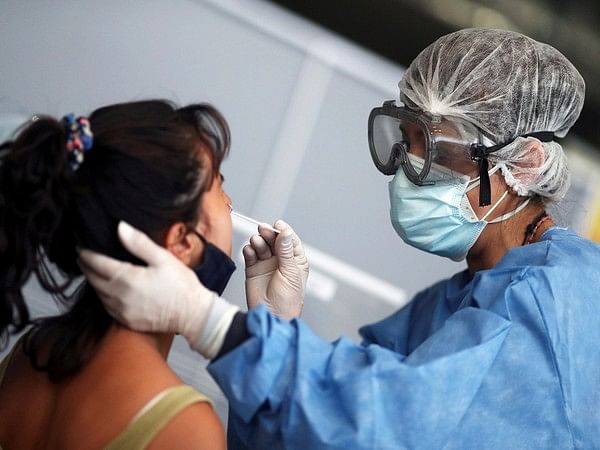New Delhi: A government-appointed panel has, for the first time, suggested different timings for vaccination against influenza or flu depending on weather patterns across three geographical locations in the country, ThePrint has learnt.
In India, the Centre-run ‘Universal Immunisation’ programme does not provide the annual vaccination against influenza, a contagious respiratory illness that can range from mild to severe. However, the government endorses immunisation for vulnerable population groups, including pregnant women, children aged six months to five years, people over 65, those with chronic medical conditions, and healthcare workers, on the lines of recommendations by the World Health Organisation.
However, the Union health and family welfare ministry does not specify the timing for the flu shots.
The government panel, which has experts from the Indian Council of Medical Research (ICMR), the National Centre for Disease Control (NCDC), and the directorate general of health services, has suggested three months during which vulnerable groups in different regions should opt for flu shots.
ThePrint has reviewed a copy of the minutes of the meeting held by the expert group in September this year. The group has suggested that vulnerable groups in mainland India and the Andaman and Nicobar Islands should opt for flu shots in May-June, and those in Tamil Nadu should get it in July. People in Jammu and Kashmir, Himachal Pradesh, and Uttarakhand—the coldest states in India—have been suggested to take the vaccination in October.
“The recommendations hinge on the analysis of influenza data between 2004-2023 and weather patterns across the country,” a panel member, who did not wish to be named, told ThePrint, adding that the panel has recommended making the suggested timings part of the influenza guidelines released by the NCDC every year.
According to government figures, nearly 15,000 cases and 239 deaths due to influenza were recorded in the country till August this year. However, experts point out gross underreporting of flu cases, mainly due to a lack of testing.
“The incidence of influenza can vary annually, but the disease burden poses a significant health threat, both in terms of hospitalisations and deaths, particularly among vulnerable populations such as the elderly, young children, pregnant women, and individuals with chronic illnesses,” Dr Rohit Garg, consultant, infectious diseases, Amrita Hospital in Faridabad, told ThePrint.
“The actual incidence of flu often goes under-reported in India,” Garg said, adding that in many cases, flu-like illnesses get misdiagnosed or not reported in health systems, leading to a lack of comprehensive data on the full scale of the problem.
In India, influenza surveillance has been conducted through the structured influenza surveillance network of ICMR-Virus Research and Diagnostic Laboratories at its National Influenza Centre since July 2021. Under the surveillance, a network of 30 sites, around the year, collect data and monitor influenza activity, said a government official.
Influenza in India
There are four types of influenza viruses—A, B, C and D. Influenza A and B viruses circulate and cause seasonal epidemics of disease.
India experiences two peaks of seasonal influenza each year, one between January and March, and another during the post-monsoon season, say officials in the health ministry. The annual vaccines can reduce the risk of flu by 50-60 percent.
As a significant portion of the population in urban areas lives in densely packed urban slums or rural areas with limited healthcare infrastructure, according to infectious disease specialists, the elderly and individuals with pre-existing conditions are particularly vulnerable to flu complications.
“Pneumonia, a common complication of flu, is a leading cause of mortality among young children and the elderly. Also, influenza can be especially dangerous for pregnant women, as it can lead to preterm births, low birth weight, and other complications,” Garg pointed out.
He added that flu-related hospitalisations, doctor visits, and treatments can have a financial strain on families and the healthcare system.
“This is especially concerning in a resource-limited country such as India, where healthcare access varies widely. Moreover, the illness also affects the workforce, resulting in lost workdays, reduced productivity, and increased absenteeism, particularly in sectors such as healthcare, transportation, and manufacturing,” Garg also said.
Another infectious disease specialist at the All India Institute of Medical Sciences (AIIMS) in Delhi underlined that flu is one of the most cost-effective public health interventions against the contagious disease.
“It can prevent quite a significant number of hospitalisations and deaths, lowering the need for more expensive treatments and long-term care. Also, immunisation has the potential to save both lives and money by preventing the flu and its complications,” the clinician said.
However, because the flu vaccine is only available privately and each dose can cost between Rs 2,000 and Rs 2,500, the cost is considered a major hindrance for those in need opting for it.
According to the Indian Academy of Pediatrics (IAP)—the largest network of paediatricians in the country—flu vaccines should be taken annually by kids aged between six months and 5 years and those with high-risk conditions.
However, the flu vaccine uptake has traditionally been low among children and those above the age of 45. For instance, the Longitudinal Ageing Study in India, a national household survey conducted during 2017–2018, showed that only 1.5 percent of adults aged 45 or above were vaccinated against influenza.
(Edited by Madhurita Goswami)
Also Read: Low-sugar diet in 1st 1,000 days of life lowers risk of diabetes, hypertension in adults—Science study

